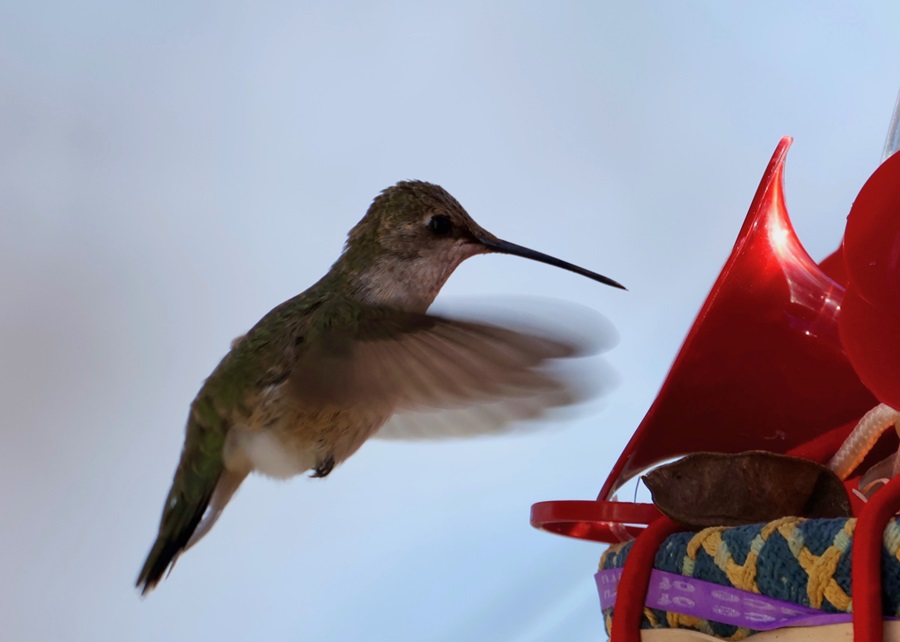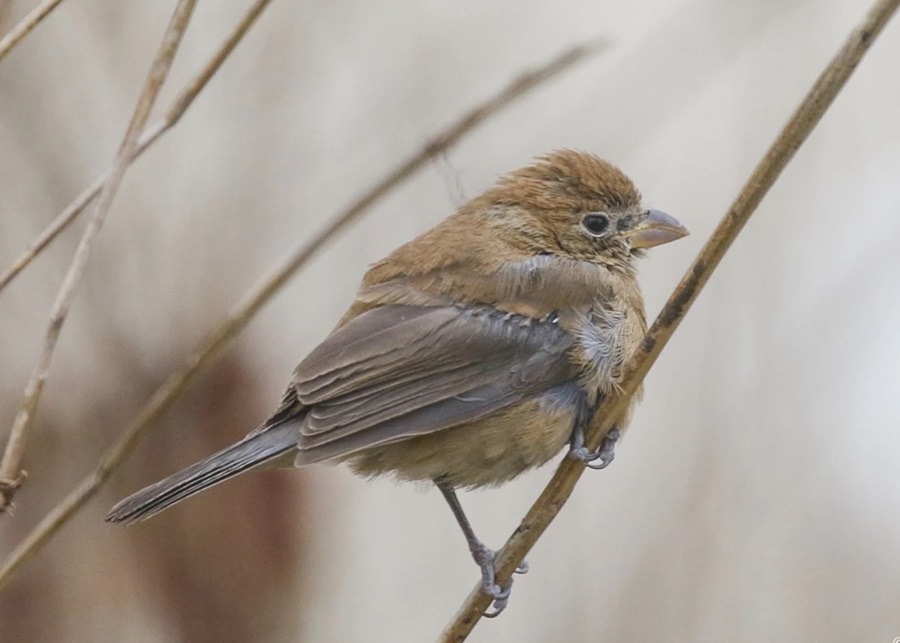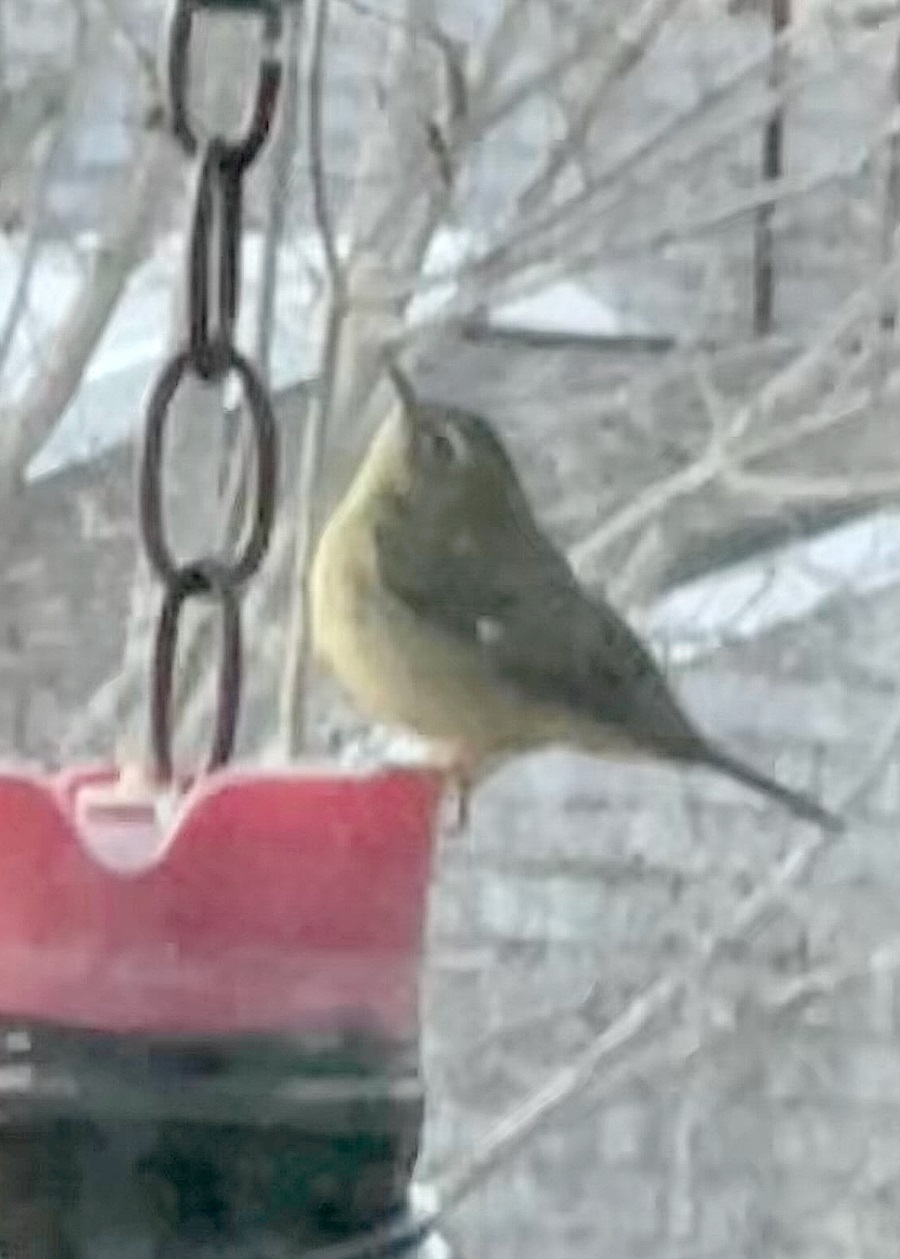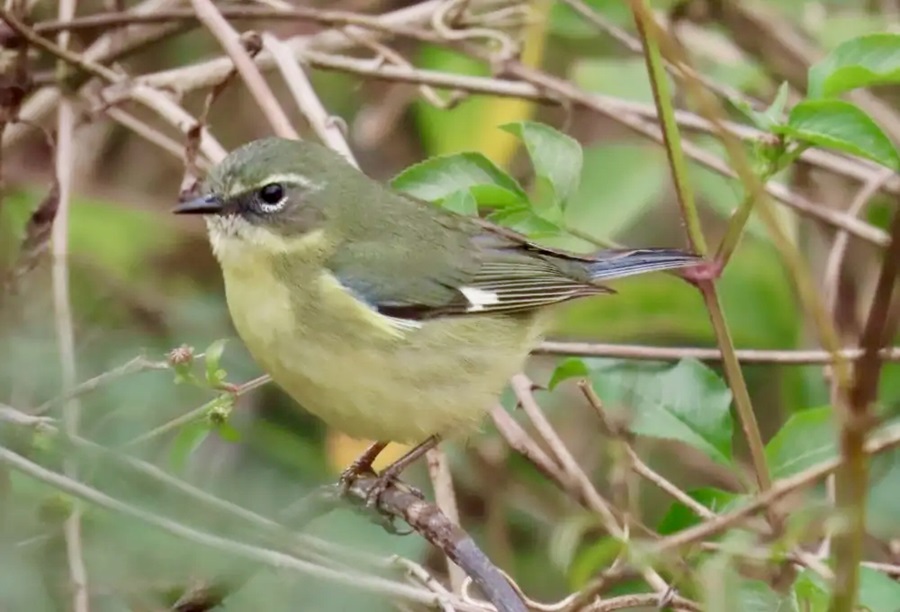This is the story of seeing the rarest bird I’ve ever seen on Cape Cod.
It was a few days before Christmas when I got an email from Provincetown resident Zygmunt Plater. He included a photograph of a female hummingbird at his feeder. This is an uncommon sight on Cape Cod in the winter. Ruby-throated hummingbirds, our only regular species, are long gone by December, and any hummingbird that appears after mid-fall is bound to be a rarer species from out West.
I really wanted to get a look at this bird and asked Zyg if I could visit. He said yes, and the next morning, as we stood in his kitchen chatting, the hummingbird appeared outside the window, hovering by the feeder and dipping her bill into it to get at the sugar water within.

It was immediately clear this was a hummingbird of the genus Archilochus, which has two members: our summertime resident ruby-throated hummingbird and its Western cousin, the black-chinned hummingbird. The females of the two species are nearly identical, and even with photos it can be tough to identify them. Fortunately, Plater had also told Mark Faherty, the science coordinator at Mass Audubon’s Wellfleet Bay Wildlife Sanctuary, about this hummingbird, and he had alerted bander Sue Finnegan. She would head up the next day to catch it in a net, where measurements of its wings and tail would confirm its identification before it was released.
The next day, as I was driving to join my family in Canada for the holiday, I got a text from Sue: what we’d seen was a black-chinned hummingbird, the third record for Cape Cod. I pumped my fist. This was a really good bird that people would want to see. Plater’s house, unfortunately, is on a road with no parking or shoulder, and the feeder isn’t visible from anywhere public. Zyg, understandably, did not want several hundred houseguests in his kitchen during the week before Christmas, so we waited until after the bird was gone to tell the birding community about it.
Now, this hummingbird was rare — but it was not the rarest bird that I saw at Zyg Plater’s house last winter.
While talking with him, I learned that he is an environmental lawyer who in 1978 successfully defended the Endangered Species Act before the Supreme Court. My girlfriend, Cassie Ferri, is a legislative analyst specializing in the Endangered Species Act. She’s also a birder. I couldn’t wait to introduce the two of them, and in January, Cassie and I paid Plater a visit.
On cue, the hummingbird appeared, popping by to feed at regular intervals. Then, while we were talking, my eyes drifted over to Plater’s other bird feeder. Among the house sparrows, a small, scraggly brown bird was feeding. “Zyg,” I said, diving for my binoculars. I then clapped eyes on a female bunting. It looked like an indigo bunting, a regular summer visitor throughout the East that is extremely rare here in the winter.

We all got a good look as I snapped some photos. Then it moved to the nearby birdbath, where the hummingbird swooped down and attacked the bunting until it flew off. While not as rare as the hummingbird, this bunting was still a rare sighting, as most indigo buntings spend the winter in Mexico, not Provincetown. Faherty later swung by to get photos of this bird, too.
Here’s where things get interesting. Jeremiah Trimble, a rare bird reviewer for the citizen science project eBird, sent a text message to Faherty a month later. “What’s up with that P’town bunting?” he asked. Faherty took a closer look at our photos, and it dawned on him: this wasn’t an indigo bunting but a varied bunting, native to Mexico and the southwestern United States. One had never before been seen east of the Appalachians — ever. And yet, here one was, on Bradford Street.
Faherty wrote to David Sibley, the author of the Sibley field guides. He agreed that it was a varied bunting. “I don’t even know what to say, Zyg,” Faherty said over email. “This is the most bizarre assortment of rarities at one house I can think of.”
I keep thinking about the chain of events that brought the presence of this bunting to come to light. First, Plater had to have a hummingbird feeder, and he had to leave it up months after most hummingbirds were gone. He had to spot the hummingbird and tell Mark and me about it, which led to the visit from Cassie and me just as the bunting was visiting. We were lucky to react quickly enough to photograph it, and Faherty had to pass his photos along, and later Trimble had to flag the bird, which got Faherty to realize what it was.
A week later, Zyg photographed another rarity at his feeder: a female black-throated blue warbler, a species that migrates through Provincetown in the spring and fall but is gone in the winter.
“Jeepers! Zyg, please keep photographing every bird that shows up at your feeder,” Mark emailed us.

Part of what makes these sightings exciting is that they represent brief moments. Zyg’s warbler was seen only the one time, the hummingbird vanished in mid-January, and the bunting was gone by mid-March. It’s too bad that these birds didn’t appear in a more public location where more people could have seen them, but that’s how it goes. I can’t tell you how many times a rare bird has turned up in my neighborhood without me learning about it until it’s gone.

How many rare birds have visited the Cape and gone unnoticed, I wonder. How many birds get spotted, then dismissed as something less unusual, as happened with this bunting at first? Some might even be noticed, photographed, and then forgotten about, languishing unidentified in someone’s camera roll.
The chance nature of all this could keep a birder up at night. But viewed another way, it is a reminder that there are so many more good birds out there to see. And thanks to the vast swaths of habitat here, that seems to be especially true of the Cape.
Spring migration is here, and with it come rarities. Right now, there are probably dozens of incredible birds swimming on secluded ponds, sitting in forgotten thickets, or soaring above distracted visitors, all of which will go unnoticed unless we take the time to look.
This is my last week writing for the Independent. When this article hits newsstands, I’ll be in a car heading to my new home with Cassie in Washington, D.C. I’ll miss this place dearly for so many reasons, but none more than the feeling that, every time I step out my door, I might see something incredible.
